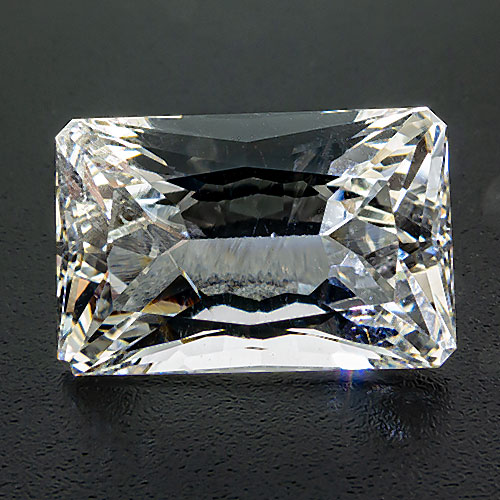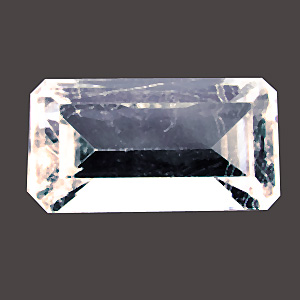Hyalophane
Rare barium feldspar.
Forms an isomorphous replacement series with celsiane, another barium feldspar.


Origin of name: First found in 1855 in the Lengenbach quarry in Binn Valley, Wallis, Switzerland. First described by Wolfgang Sartorius von Waltershausen, who named the transparent, vitreous crystals after the Greek words ὕαλος ["hyalos"] for glassy and φαίνομαι ["phenome"] for to seem, appear.
Synonyms and trade names: none
Can be confused with: all colourless and yellowish minerals.
Localities: at the time of writing (2015) mindat.org lists 78 deposits. Facetable material is extremely rare, though.
The Zagradski Potok mine near Busovača (Bosnia and Herzegovina) is famous amongst mineral collectors for having yielded spectacular twin crystals of up to 20cm.
Handling: like all feldspars, hyalophane sports perfect cleavage and has to be set with extreme care. Do not clean ultrasonically! Sensitive to acid and brine.
Worth knowing: the Zagradski Potok (Potok = creek) mine was discovered in the early 1950ies, when the then Yugoslavian military was searching for quartz, which, because of the piezo-electric properties, was needed for the production of radar devices.
Besides quartz, large crystals of a mineral, which later was identified as hyalophane, were found.
Quartz production stopped soon after, when the material turned out to be unsuitable for the intended purpose.
Until then, roughly 500kgs of hyalophane had been retrieved, which ended up in the Geological Institute of Sarajevo, where they were stored for several years. When the institute needed the room, some specimens were passed on to other institutes, museums and universities. Most of the material ended up at the city dump. Only very few pieces found their way into the hands of collectors and from there to international museums.
However, the spectacular twin crystals soon aroused interest in scientists and collectors alike and in 1971 the mine was reactivated by scientists of the Croatian Natural History Museum and a group of Slovenian collectors. In particular between 1980 and 1991 some truly outstanding crystals and crystal groups were retrieved.
In 1991 the beginning of the Yugoslav Wars enforced the closing of the mine. After the war peacekeeping forces destroyed collected ammunition and explosives in the woods around the mine, which caused extensive devastation.
Nevertheless, in 1996 some collectors moved in heavy machinery and managed to open the mine once again. Mining activities continued for eight years. Unfortunately the quantity, as well as the quality of the hyalophane mined during these years did not match the material mined in the 1980ies. In 2004 the mine was depleted and filled up, once and for all.
 Deutsch
Deutsch